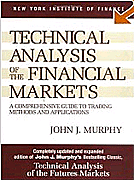Worried investors want gold on hand
Carolyn Cui and Allen Sykora
The Wall Street Journal
Wednesday, February 25, 2009
Some investors are so worried about the prospect of economic collapse that they are buying gold and having it delivered to them, rather than holding the precious metal in the form of futures contracts or other securities.
The global recession and worries about the stability of the financial system have sent the price of gold to $1,000 an ounce. But more surprising is that buyers are taking the unusual and expensive step of taking possession of it.
"We're having some of our strongest months ever," said Scott Thomas, president and chief executive of American Precious Metals Exchange, a precious-metals dealer in Edmond, Okla. "The bottom line is our numbers are probably double what they were last year, and last year was very busy."
Bob Coleman, who runs a bullion fund out of Nampa, Idaho, has taken multiple deliveries of gold and silver since last fall for his clients. The fund, Dollars and Sense Growth Fund, primarily invests in precious metals for high-net-worth individuals.
"It's more of a trust issue," says Mr. Coleman. "Given all the turmoil in the market, people prefer to have access to the metal."
Sales of American Eagle gold bullion coins at the U.S. Mint in Philadelphia more than doubled in the first two months of this year.
Investors are also flocking to gold coins. At the U.S. Mint, a total of 147,500 ounces of American Eagle gold bullion coins were sold in the first two months this year, a surge of 176% from the same period last year.
Demand is rising at the Comex, the metals division of the New York Mercantile Exchange, where investors increasingly are choosing to take physical delivery of gold, rather than cash, once their futures contacts expire.
Rising delivery orders have kept Brink's Inc., a major carrier for the Comex, busy. The Richmond, Va., company said it saw a large spike in clients shipping gold and silver from the exchange over the past few months.
Tony Klancic, an account executive at Lind-Waldock, a Chicago commodities brokerage, says he has been taking calls since September from individual investors wanting to buy physical gold.
These are "real people in rural America with money under the mattress, and wealthy individuals coming to the futures market strictly intending to take delivery," Mr. Klancic said.
In December, 4.5% of gold contracts ended in delivery, compared with 3.4% a year earlier, according to the exchange. Investors also are taking delivery of silver, with contracts ending in delivery rising to 7.3% from 4.7%. December is typically a big month for deliveries, and in January, deliveries remained higher than the year before.
Jewelers and other users of metals are among the buyers who take possession of gold and silver. But with sales of jewelry down and other industrial users cutting back, it appears that investors are causing the increase.
Gold deliveries peaked at more than 8% in the early 1980s, when Mexico defaulted on its foreign debt and the world economy was in recession. Deliveries dropped and have gradually fallen back to the range of 2% in recent years.
Gold pierced the $1,000 level last Friday, the first time since March 2008. On Tuesday, the February contract closed at $969.10 per troy ounce. So far this year, the precious metal is up 9.7%.
Taking physical delivery of gold can be costly and complicated. Investors typically buy gold on exchanges using futures contracts. Since each contract represents 100 ounces of gold, an investor would have to pay $96,910 per contract, based on Tuesday's close, in order to take delivery. By contrast, investors need to put down only $3,999 up front to trade such a futures contract.
"It is an expensive proposition," says Jeff Christian, managing director at CPM Group, a New York precious-metal research firm.
Also, the logistics of buying a big lump of metal might be daunting for smaller players. Investors who decide to take delivery of gold contracts face high storage and insurance costs. And if buyers actually want the gold or other precious metals in their possession, they must arrange for delivery by armored truck. In a recent delivery of 100,000 ounces of silver, Mr. Coleman paid $3,000 to transport the metal from New York to Idaho.
* * *
The Wall Street Journal
Wednesday, February 25, 2009
Some investors are so worried about the prospect of economic collapse that they are buying gold and having it delivered to them, rather than holding the precious metal in the form of futures contracts or other securities.
The global recession and worries about the stability of the financial system have sent the price of gold to $1,000 an ounce. But more surprising is that buyers are taking the unusual and expensive step of taking possession of it.
"We're having some of our strongest months ever," said Scott Thomas, president and chief executive of American Precious Metals Exchange, a precious-metals dealer in Edmond, Okla. "The bottom line is our numbers are probably double what they were last year, and last year was very busy."
Bob Coleman, who runs a bullion fund out of Nampa, Idaho, has taken multiple deliveries of gold and silver since last fall for his clients. The fund, Dollars and Sense Growth Fund, primarily invests in precious metals for high-net-worth individuals.
"It's more of a trust issue," says Mr. Coleman. "Given all the turmoil in the market, people prefer to have access to the metal."
Sales of American Eagle gold bullion coins at the U.S. Mint in Philadelphia more than doubled in the first two months of this year.
Investors are also flocking to gold coins. At the U.S. Mint, a total of 147,500 ounces of American Eagle gold bullion coins were sold in the first two months this year, a surge of 176% from the same period last year.
Demand is rising at the Comex, the metals division of the New York Mercantile Exchange, where investors increasingly are choosing to take physical delivery of gold, rather than cash, once their futures contacts expire.
Rising delivery orders have kept Brink's Inc., a major carrier for the Comex, busy. The Richmond, Va., company said it saw a large spike in clients shipping gold and silver from the exchange over the past few months.
Tony Klancic, an account executive at Lind-Waldock, a Chicago commodities brokerage, says he has been taking calls since September from individual investors wanting to buy physical gold.
These are "real people in rural America with money under the mattress, and wealthy individuals coming to the futures market strictly intending to take delivery," Mr. Klancic said.
In December, 4.5% of gold contracts ended in delivery, compared with 3.4% a year earlier, according to the exchange. Investors also are taking delivery of silver, with contracts ending in delivery rising to 7.3% from 4.7%. December is typically a big month for deliveries, and in January, deliveries remained higher than the year before.
Jewelers and other users of metals are among the buyers who take possession of gold and silver. But with sales of jewelry down and other industrial users cutting back, it appears that investors are causing the increase.
Gold deliveries peaked at more than 8% in the early 1980s, when Mexico defaulted on its foreign debt and the world economy was in recession. Deliveries dropped and have gradually fallen back to the range of 2% in recent years.
Gold pierced the $1,000 level last Friday, the first time since March 2008. On Tuesday, the February contract closed at $969.10 per troy ounce. So far this year, the precious metal is up 9.7%.
Taking physical delivery of gold can be costly and complicated. Investors typically buy gold on exchanges using futures contracts. Since each contract represents 100 ounces of gold, an investor would have to pay $96,910 per contract, based on Tuesday's close, in order to take delivery. By contrast, investors need to put down only $3,999 up front to trade such a futures contract.
"It is an expensive proposition," says Jeff Christian, managing director at CPM Group, a New York precious-metal research firm.
Also, the logistics of buying a big lump of metal might be daunting for smaller players. Investors who decide to take delivery of gold contracts face high storage and insurance costs. And if buyers actually want the gold or other precious metals in their possession, they must arrange for delivery by armored truck. In a recent delivery of 100,000 ounces of silver, Mr. Coleman paid $3,000 to transport the metal from New York to Idaho.
* * *
Labels: bullion coins, economic crisis, gold















![[Most Recent Quotes from www.kitco.com] [Most Recent Quotes from www.kitco.com]](http://www.kitco.com/images/live/t24_au_en_usoz_6.gif)
![[Most Recent Quotes from www.kitco.com] [Most Recent Quotes from www.kitco.com]](http://www.kitco.com/images/live/au_go_0030_ny.gif)
![[Most Recent Quotes from www.kitco.com] [Most Recent Quotes from www.kitco.com]](http://www.kitco.com/images/live/au_go_0365_ny.gif)
![[Most Recent Quotes from www.kitco.com] [Most Recent Quotes from www.kitco.com]](http://kitconet.com/charts/metals/silver/t24_ag_en_usoz_4.gif)

















0 ΣΧΟΛΙΑ (COMMENTS):
Post a Comment
<< Home